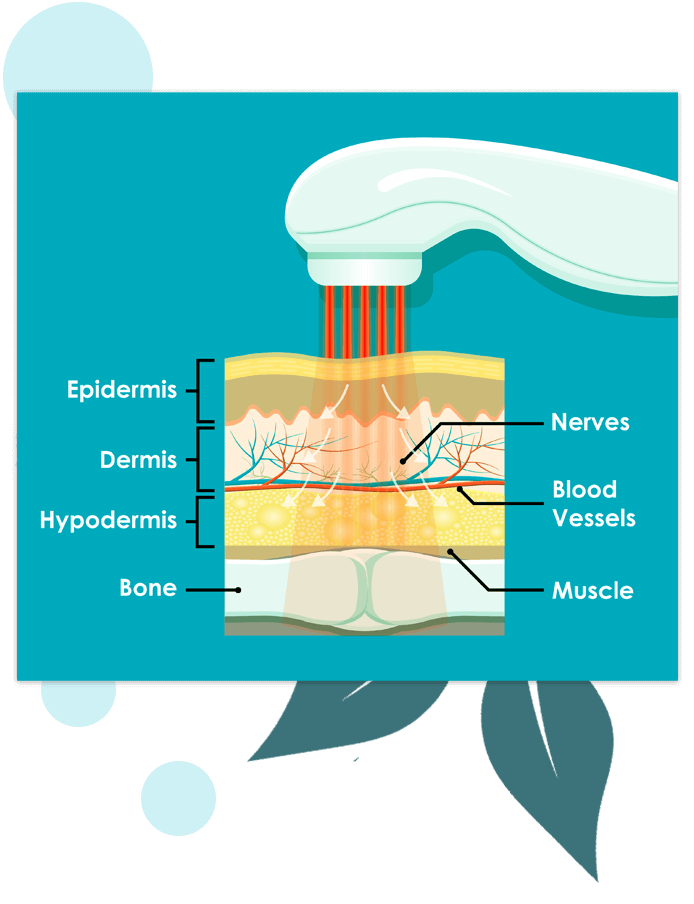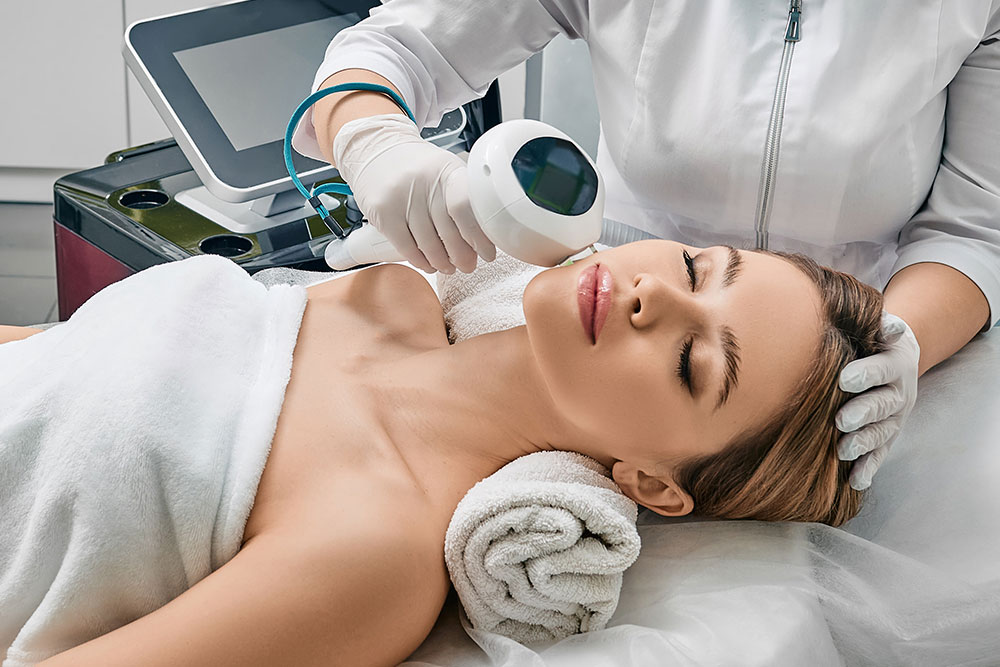Radiant Healing: Understanding the Systems of Laser Light Therapy
Wiki Article
The Role of Clinical Laser Therapy in Injury Healing and Tissue Regrowth
Did you recognize that medical laser treatment has the possible to reinvent wound recovery and cells regeneration? Whether you're dealing with chronic wounds, surgical lacerations, or tissue damage, laser treatment may provide the mild yet powerful intervention you need. In this guide, we will certainly check out the duty of clinical laser therapy in injury recovery and tissue regeneration, reviewing its benefits, methods, tools, as well as its restrictions and factors to consider.Understanding Medical Laser Therapy
If you frequently struggle with injuries or cells damages, it is essential for you to recognize how medical laser therapy can help in increasing the healing procedure (laser therapeutic). Medical laser therapy is a non-invasive therapy that uses concentrated light to stimulate cellular activity and advertise cells repair service. The laser gives off a particular wavelength of light that is soaked up by the cells in the targeted area, activating a series of biological reactions that assist in healingAmong the primary benefits of clinical laser therapy is its capability to decrease swelling. By targeting the injured area with the laser, it can aid to decrease swelling and pain, enabling faster recovery. The laser additionally stimulates the production of collagen, a crucial component in injury healing, which assists to strengthen and restore damaged tissues.
Clinical laser treatment can be utilized to deal with a variety of conditions, including injuries, burns, muscle mass pressures, and joint discomfort. It is a efficient and safe treatment option, with very little adverse effects. medical laser therapy. Numerous people report feeling a cozy, soothing sensation during the therapy, and experience prompt discomfort alleviation
Advantages of Laser Treatment for Wound Healing
Utilizing medical laser treatment for wound recovery offers numerous advantages that can accelerate the recovery procedure. One of the main benefits is that laser therapy assists to lower pain and inflammation connected with injuries.Another advantage of laser therapy is its ability to enhance blood circulation to the injured location. The laser light increases the formation of new blood vessels, improving oxygen and nutrient supply to the broken cells. This sped up blood circulation helps with the removal of waste items and contaminants, additionally supporting the recovery procedure.
Laser therapy also aids in the formation of collagen, a vital element of injury healing. The laser promotes fibroblast activity, which are cells accountable for collagen manufacturing - laser therapy light. Collagen helps to strengthen the injury and promote the growth of brand-new tissue, resulting in faster injury closure
In addition, laser therapy has been revealed to have antimicrobial impacts, assisting to protect against infections in wounds. The laser power kills microorganisms and various other microorganisms, reducing the threat of problems and making certain a tidy setting for recovery.
Laser Therapy for Tissue Regeneration
To promote cells regrowth, medical laser treatment can be made use of combined with various other treatment approaches. Laser treatment has actually been revealed to boost the manufacturing of growth factors and boost the recovery procedure. It works by providing focused light energy to the targeted location, which can pass through deep into the cells and stimulate cellular task.
In addition, laser treatment can additionally promote collagen synthesis, a vital part of cells regeneration. Collagen provides structural support and assists in the development of brand-new cells. Laser treatment boosts fibroblasts, the cells in charge of collagen production, bring about boosted collagen synthesis and improved cells regeneration.

Techniques and Equipment in Laser Treatment
When using clinical laser therapy for injury recovery and cells regeneration, it is necessary to understand the techniques and equipment entailed. Laser treatment makes use of different methods to accomplish optimal results. One frequently used technique is called low-level laser therapy (LLLT) or cold laser therapy. LLLT entails making use of low-power lasers or light-emitting diodes (LEDs) to stimulate mobile activity and advertise recovery. One more strategy is high-intensity laser treatment (HILT), which utilizes greater power lasers to deliver therapeutic effects deeper right into the cells. Handle is specifically efficient for deep cells injuries or chronic injuries.In terms of devices, laser therapy tools come in various types. These gadgets are portable, very easy to make use of, and permit for specific application of laser therapy. Some laser treatment equipment likewise includes advanced attributes such as flexible power settings, different wavelengths, and built-in safety and security steps.
Comprehending the techniques and tools utilized in medical laser treatment is important for medical care experts to provide reliable and secure therapies. By keeping up to date with the most recent advancements in laser therapy techniques and devices, medical care service providers can remain to boost injury recovery and cells regrowth outcomes for their individuals.
Limitations and Considerations in Laser Treatment
One important factor to consider in laser treatment is the possible restrictions that medical care professionals should laser therapy be aware of. While laser treatment has actually revealed encouraging results in injury healing and tissue regrowth, it is not without its restrictions.An additional restriction is the possibility for adverse effects. Laser therapy, when not used properly, can cause burns, pain, and cells damage. It is critical for health care experts to have the essential training and expertise to guarantee reliable and risk-free treatment. Furthermore, particular client qualities, such as skin type, sensitivity, and underlying medical conditions, require to be taken into consideration to reduce the danger of unfavorable impacts.
Price is another factor to consider in laser therapy. The tools required for laser treatment can be costly, and the cost may limit its ease of access in certain healthcare setups. Furthermore, the upkeep and functional expenses of the equipment must be considered when thinking about the feasibility of implementing laser therapy.
Final Thought
To conclude, medical laser therapy plays a considerable role in wound healing and tissue regrowth. With its many benefits, such as sped up healing, minimized discomfort, and marginal scarring, laser treatment has actually confirmed to be an important treatment choice. The usage of innovative strategies and tools more enhances its efficiency. Nonetheless, it is necessary to think about the limitations and prospective threats connected with laser therapy to make sure safe and ideal end results.In this overview, we will discover the duty of clinical laser therapy in wound healing and tissue regeneration, reviewing its benefits, techniques, devices, as well as its restrictions and factors to consider.When making use of medical laser treatment for wound healing and cells regrowth, it is important to comprehend the techniques and tools involved. One commonly made use of method is recognized as low-level laser therapy (LLLT) or cool laser therapy. An additional strategy is high-intensity laser therapy (HILT), which makes use of greater power lasers to deliver therapeutic impacts deeper right into the cells.In conclusion, medical laser therapy plays a substantial role in injury recovery and tissue regeneration.
Report this wiki page